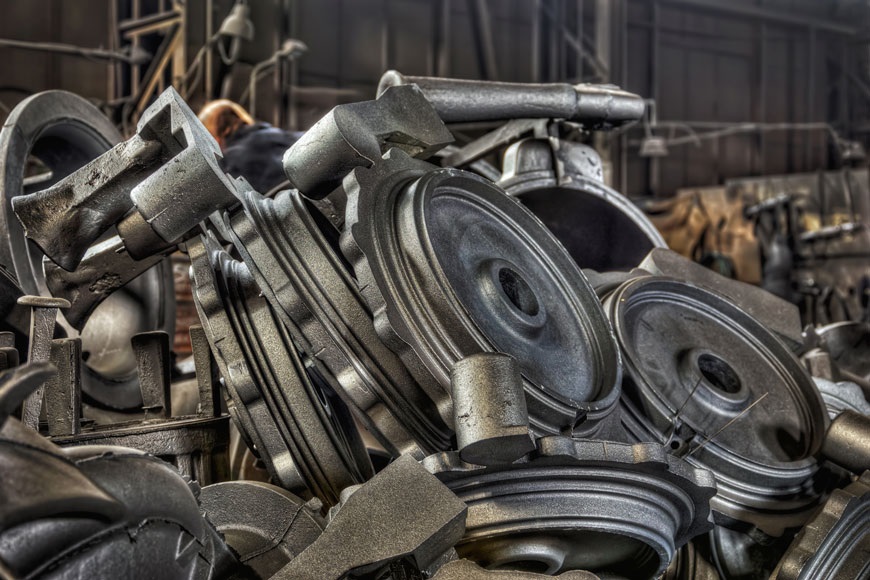Selecting the right type of iron for your casting needs can be a daunting task, especially when deciding between gray and ductile iron casting. Both types of iron offer unique properties and benefits, making them suitable for different applications. To make an informed decision, it’s essential to understand your project requirements, compare material properties, consider cost and budget, and consult industry experts. Let’s dive into each of these aspects to help you select the best type of iron for your casting needs.
Assessing Your Project Requirements
Before you can determine which type of iron to use, it’s crucial to assess the specific needs of your project. Ask yourself the following questions:
-
What is the intended use of the cast part?
-
What are the mechanical stresses and environmental conditions it will face?
-
Are there any specific regulatory or industry standards it must meet?
-
How critical is the dimensional accuracy and surface finish?
By clearly defining the requirements, you can narrow down your options. For example, if your project demands high strength and impact resistance, ductile iron might be the better choice. On the other hand, if you need excellent vibration damping and thermal conductivity, gray iron could be more suitable. Once you have a clear understanding of your project’s demands, the next step is to delve into the material properties of each iron type.
Evaluating Material Properties: Strength and Flexibility
Understanding the properties of gray and ductile iron is key to making an informed choice. Here’s a comparison of their primary characteristics:
Gray Iron
-
Strength and Hardness: Gray iron has a relatively lower tensile strength compared to ductile iron, but it is still suitable for many applications.
-
Vibration Damping: Excellent vibration damping properties make it ideal for machinery bases and housings.
-
Thermal Conductivity: High thermal conductivity is beneficial in applications like engine blocks and brake discs.
-
Machinability: It is easy to machine, reducing the cost of manufacturing complex parts.
Ductile Iron
-
Strength and Flexibility: Ductile iron has higher tensile strength and better flexibility, making it suitable for parts that experience dynamic loads.
-
Impact Resistance: Superior impact resistance makes it ideal for automotive and structural applications.
-
Fatigue Resistance: Better fatigue resistance than gray iron, suitable for parts under cyclic loads.
-
Machinability: While not as easily machinable as gray iron, advances in machining techniques have reduced the difference.
Having a clear picture of the material properties is essential, but balancing these properties with your budget constraints is the next critical step.
Balancing Quality with Expense: Cost and Budget Considerations
Balancing quality with expense is a critical aspect of any project. The cost of raw materials, manufacturing, and post-processing should all be considered. Gray iron is generally less expensive than ductile iron due to its simpler production process and lower raw material costs. However, the initial savings might be offset by higher maintenance and replacement costs if the material fails to meet performance expectations.
Here are some cost considerations:
-
Initial Material Cost: Gray iron is cheaper, making it attractive for budget-sensitive projects.
-
Lifecycle Costs: Consider long-term costs, including maintenance and potential replacement.
-
Manufacturing Costs: Ductile iron may have higher initial machining costs, but it can lead to savings in performance-critical applications.
Balancing these cost factors with the material properties and project requirements helps in making a sound decision. However, consulting industry experts can provide further insights and guidance.
Leveraging Expertise: Consulting Industry Professionals
Getting professional recommendations can be invaluable, especially for complex or high-stakes projects. Industry experts can provide insights based on experience and technical knowledge that you might not have. Here’s how to leverage their expertise:
-
Material Selection: Experts can help you understand the nuances of each type of iron and how they will perform in your specific application.
-
Process Optimization: They can advise on the best casting methods, heat treatment processes, and machining techniques.
-
Standards and Compliance: Ensure that your project meets all relevant industry standards and regulatory requirements.
Industry consultants, foundries, and material scientists are great resources to tap into. Additionally, many suppliers offer technical support services to help you choose the right material and optimize your manufacturing process. With expert guidance, you can make an even more informed decision.
Conclusion: Making the Final Decision
Selecting the right type of iron for your casting needs involves a careful evaluation of your project requirements, a thorough comparison of material properties, consideration of cost and budget, and consultation with industry experts. Gray and ductile iron each have distinct advantages and are suited to different applications. By understanding the strengths and limitations of each, you can make an informed decision that ensures the success and longevity of your project. Remember, the right choice today can save you significant time, money, and effort in the future.

